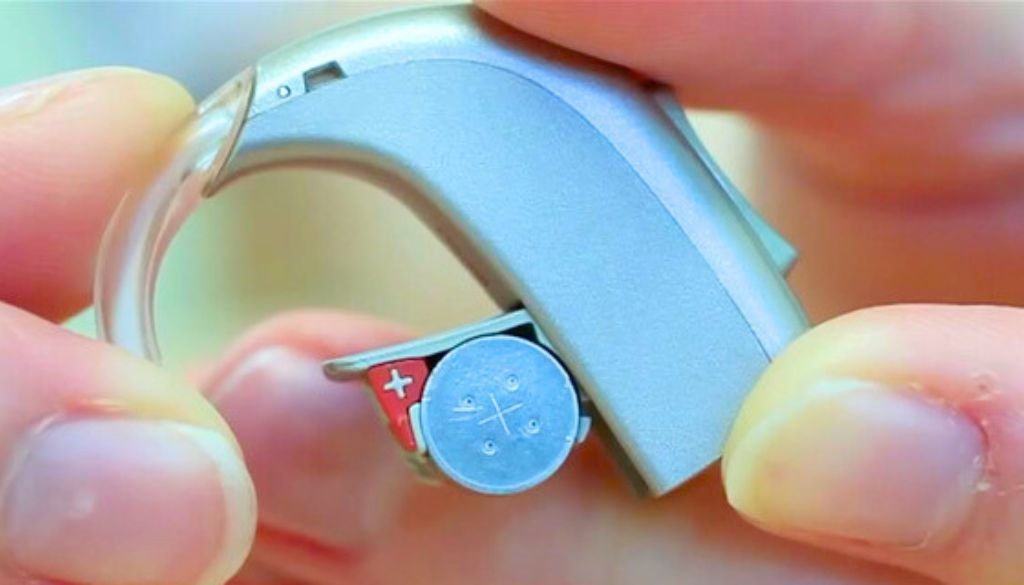Understanding How to Open Hearing Aid Battery Door is essential for anyone using a hearing aid, ensuring their device functions optimally. Proper maintenance and timely battery replacement are necessary for uninterrupted hearing support. This guide is designed to walk you through the straightforward process of opening the battery door of your hearing aid.
By mastering these simple yet crucial steps, you can confidently and efficiently access the battery compartment of your hearing aid. This skill facilitates regular maintenance and enables you to handle battery replacements independently, ensuring your hearing aid is always working well.

Key Takeaways:
- Opening the battery door is an essential part of hearing aid maintenance.
- Follow these steps to open your hearing aid battery door easily.
- Properly maintaining your hearing aid battery helps optimize its performance.
- Regularly replace your hearing aid battery to ensure consistent usage.
- Consult your hearing healthcare professional if you encounter difficulties opening the battery door.
How to Increase the Lifespan of Your Hearing Aid Batteries
Proper care and maintenance of your hearing aid batteries can significantly extend their lifespan and optimize their performance. By following these simple steps, you can ensure that your batteries last longer:
- Keep your hearing aids dry:
Moisture can damage hearing aid batteries, so keeping them dry is essential. After wearing your hearing aids, remove the batteries and open the battery door to allow any moisture to evaporate. You can also use a hearing aid dehumidifier or a drying kit to remove excess water.
- Clean and inspect your hearing aids regularly:
Dirt, debris, and earwax buildup can interfere with the performance of your hearing aids and drain the battery more quickly. Clean your hearing aids daily using a soft, dry cloth or the cleaning tools provided by the manufacturer. Make sure to inspect the battery compartment and remove any debris that may be present.
- Turn off your hearing aids when not in use:
When you’re not wearing your hearing aids, it’s essential to turn them off to conserve battery power. Most hearing aids have a power switch or a battery compartment door that can be opened to disconnect the battery. This simple step can help prolong the life of your batteries.
- Pro Tip: If you don’t use your hearing aids for an extended period, such as during sleep or travel, consider obliterating the batteries to prevent any accidental drain.
Incorporating these practices into your daily hearing aid care routine can maximize the lifespan of your batteries, saving you time and money in the long run.
Proper care and maintenance of your hearing aid batteries can significantly extend their lifespan and optimize their performance.
Read Also: How to Measure Hearing Aid Domes
What to Do When Your Hearing Aid Battery Needs Replacement
When replacing your hearing aid battery, following the proper steps is essential to ensure a smooth transition. Here’s a simple guide to help you through the process:
Step 1: Prepare a Clean and Well-Lit Area
Find a comfortable and well-lit area to safely handle your hearing aid and battery. It’s crucial to have a clean space free from dust, debris, or any potential hazards that could damage the delicate components of your device.
Step 2: Turn Off Your Hearing Aid
Before replacing the battery, make sure to turn off your hearing aid. This will prevent accidental feedback or damage to your device during the replacement process.
Step 3: Open the Battery Compartment
Locate the battery compartment on your hearing aid, usually indicated by a small door or panel. Gently open the box using your fingers, a small tool, or per the manufacturer’s instructions. Take care not to force the door open, as it may cause damage to the device or battery.
Step 4: Remove the Old Battery and Insert the New One
Once the battery compartment is open, carefully remove the old battery by tilting the hearing aid or using a designated removal tool. Dispose of the old battery properly according to local regulations. Then, insert the new battery into the compartment, ensuring that the positive (+) and negative (-) ends align with the appropriate markings or indicators.
Handle the battery with clean, dry hands to avoid contamination or moisture affecting its performance. If your hearing aid uses a rechargeable battery, follow the manufacturer’s instructions for charging and replacing the battery as needed.
Following these simple steps, you can easily replace your hearing aid battery and enjoy clear, uninterrupted sound. Consult your hearing healthcare professional for questions or concerns about the battery replacement process.
Understanding Hearing Aid Battery Life and Warning Signs
The lifespan of hearing aid batteries can vary depending on various factors, including the brand, streaming service usage, and maintenance routine. On average, most batteries last between 80 to 220 hours. However, it’s essential to be aware of warning signs that indicate the need for battery replacement.
One common question is whether not wearing hearing aids can cause dizziness. While not wearing hearing aids may not directly cause dizziness, it can lead to difficulties in understanding sounds and maintaining balance, which could indirectly contribute to feelings of dizziness.
Another concern is whether hearing aids can cause hearing loss. When used correctly and appropriately fitted, hearing aids should not cause further hearing loss. They can help improve hearing ability and prevent further deterioration. It is essential to have regular check-ups with an audiologist to ensure that the hearing aids are set to appropriate levels and do not cause any harm.
How long does tinnitus last after head injury? Learn more in our detailed article where we explore various aspects and provide valuable insights.
Hearing aids, mainly when worn in only one ear, can cause a sensation of vertigo. This is because the brain may receive conflicting signals from the ears, leading to a feeling of imbalance. It’s advisable to consult with an audiologist if you experience persistent vertigo while wearing hearing aids.
Paying attention to any changes in hearing aid performance is always essential. If you notice any of the warning signs below, it may be time to replace your hearing aid battery:
- Inconsistent sound quality or volume
- Fading or distorted sound
- Frequent need to adjust the volume
- Shortened battery life
- Intermittent or no sound
By understanding the factors that impact hearing aid battery life and being aware of warning signs, you can ensure that your hearing aids continue to function optimally, allowing you to enjoy the benefits of improved hearing.
Conclusion
Properly maintaining your hearing aid battery is crucial for optimal performance and longevity. Following the steps outlined in this article, you can easily open and replace the battery in your hearing aid.
Remember to consult your audiologist or hearing healthcare professional if you have any concerns or questions about wearing a hearing aid with a pacemaker. Additionally, they can assist you in connecting your hearing aids to Bluetooth on your iPhone and troubleshoot any issues, such as hearing aids disconnecting from Bluetooth.
While not wearing hearing aids can cause dizziness and potentially lead to a decline in hearing ability, it’s essential to prioritize your hearing health. Hearing aids can mitigate the risk of ear infections, hearing loss, and vertigo. If you experience dizziness while wearing only one hearing aid, consult your healthcare professional for proper adjustment and guidance.
Explore the latest insights on whether can migraines cause hearing loss
Regarding the cost of hearing aids, specific pricing may vary depending on factors such as your insurance provider. For example, Humana may offer various coverage options for hearing aids. It’s best to check with your insurance provider or a hearing healthcare specialist to determine how much Humana pays for hearing aids and what options are available.
Frequently Asked Questions
How do I open the battery door of my hearing aid?
To open the battery door of your hearing aid, follow these steps:
1. Locate the battery door on the back or side of the device.
2. Gently slide or push the battery door in the direction indicated by the arrow or symbol.
3. The battery door should open, allowing you to access the compartment.
How can I increase the lifespan of my hearing aid batteries?
To increase the lifespan of your hearing aid batteries, you can:
– Keep your hearing aids turned off when not in use.
– Store your hearing aids in a dry, cool place to prevent moisture damage.
– Clean your hearing aids regularly to remove any debris affecting battery performance.
What should I do when my hearing aid battery needs replacement?
When it’s time to replace your hearing aid battery, follow these steps:
1. Open the battery door using the steps mentioned above.
2. Remove the old battery from the compartment, noting its positive (+) and negative (-) orientation.
3. Insert a new battery into the compartment, ensuring it matches the correct polarity.
4. Close the battery door securely.
How long do hearing aid batteries last? What are the warning signs for replacement?
The lifespan of hearing aid batteries can vary, but most last between 80 to 220 hours. Warning signs that indicate the need for battery replacement include:
– Reduced sound amplification or clarity.
– Frequent need to increase volume settings.
– Unexpected device shutdown or intermittent operation.
Do hearing aids cause any adverse effects like dizziness or hearing loss?
Hearing aids, when properly fitted and maintained, should not cause dizziness or hearing loss. However, if you experience any discomfort or unusual symptoms, consult your audiologist for adjustments or further evaluation.



